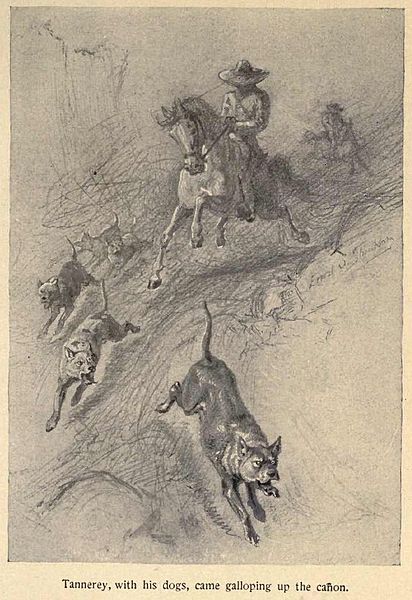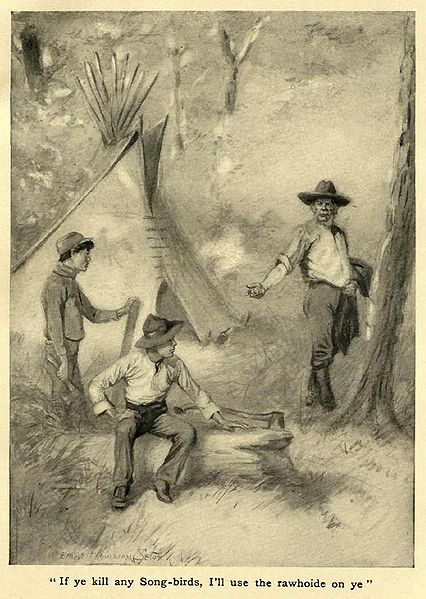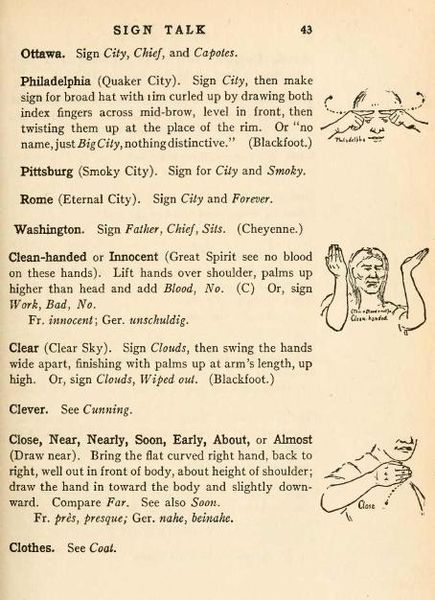<Back to Index>
- Psychiatrist Richard von Krafft - Ebing, 1840
- Writer Ernest Thompson Seton, 1860
- Emperor of Japan Hanazono, 1297
PAGE SPONSOR
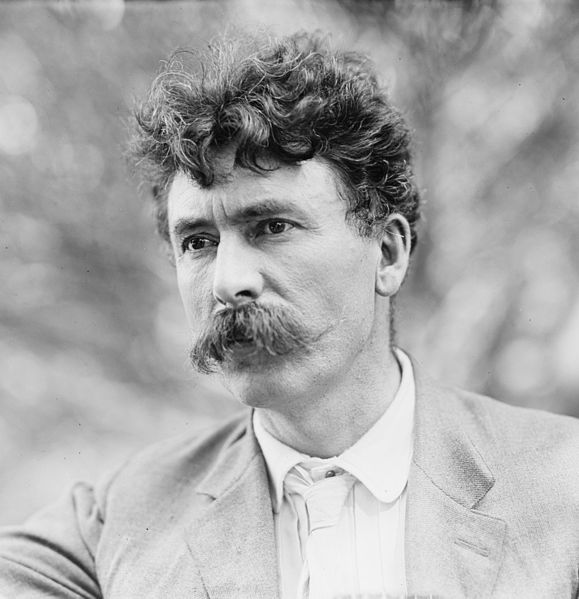
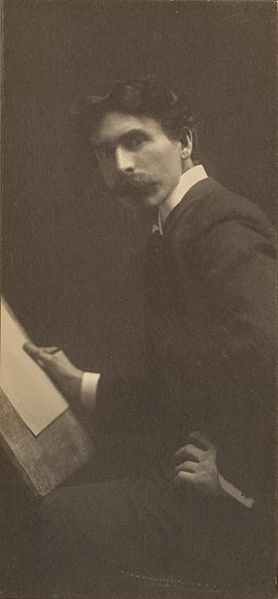
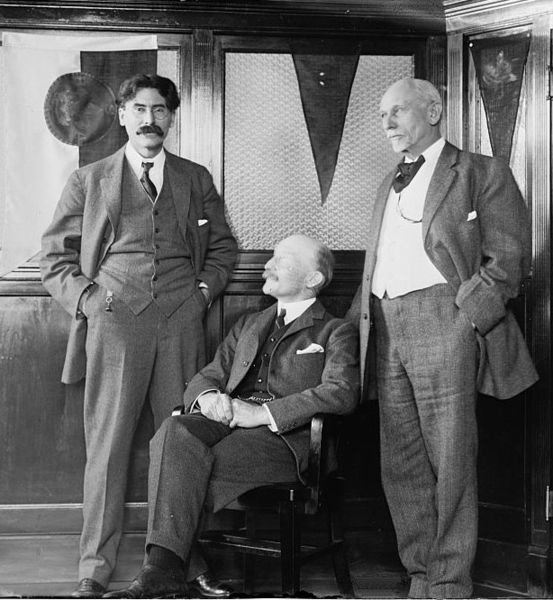
Ernest Thompson Seton (August 14, 1860 – October 23, 1946) was a Scots - Canadian (and naturalized U.S. citizen) who became a noted author, wildlife artist, founder of the Woodcraft Indians, and one of the founding pioneers of the Boy Scouts of America (BSA). Seton also heavily influenced Lord Baden - Powell, the founder of Scouting. His notable books related to Scouting include The Birch Bark Roll and The Boy Scout Handbook. He is responsible for the strong influence of American Indian culture in the BSA.
Born Ernest Evan Thompson in South Shields, County Durham (now part of South Tyneside, Tyne and Wear), England, of Scottish parents, Seton's family migrated to Canada in 1866. Most of his childhood was spent in Toronto. As a youth, he retreated to the woods to draw and study animals as a way of avoiding his abusive father. He won a scholarship in art to the Royal Academy in London, England.
He later rejected his father and changed his name to Ernest Thompson Seton. He believed that Seton had been an important name in his paternal line. He developed a fascination with wolves while working as a naturalist for Manitoba. He became successful as a writer, artist and naturalist, and moved to New York City to further his career. Seton later lived at Wyndygoul, an estate that he built in Cos Cob, a section of Greenwich, Connecticut. After experiencing vandalism by the local youth, Seton invited them to his estate for a weekend where he told stories of the American Indians and of nature.
He formed the Woodcraft Indians in 1902 and invited the local youth to join. The stories became a series of articles written for the Ladies Home Journal and were eventually collected in the The Birch Bark Roll of the Woodcraft Indians in 1906.
Seton
married twice. His first marriage was to Grace Gallatin in 1896. Their
only daughter, Ann, was born in 1904 and died in 1990. Ann, who later
changed her first name, became a best selling author of historical and
biographical novels as Anya Seton. According to Ann's introduction to the novel Green Darkness, Grace was a practicing Theosophist. Ernest and Grace divorced in 1935, and Ernest soon married Julia M. Buttree.
Julia would write works by herself and with Ernest. They did not have
any biological children, but did adopt an infant daughter, Beulah (Dee)
Seton (later Dee Seton Barber), in 1938. Dee Seton Barber died in 2006. Seton met Scouting's founder, Lord Baden - Powell, in 1906. Baden - Powell had read Seton's book, The Birch Bark Roll of the Woodcraft Indians,
and was greatly intrigued by it. The pair met and shared ideas.
Baden - Powell went on to found the Scouting movement worldwide, and Seton
became vital in the foundation of the Boy Scouts of America (BSA) and was its first Chief Scout. His Woodcraft Indians (a youth organization), combined with the early attempts at Scouting from the YMCA and other organizations, and Daniel Carter Beard's Sons of Daniel Boone, to form the BSA. The work of Seton and Beard is in large part the basis of the Traditional Scouting movement. Seton
was Chief Scout of the BSA from 1910 – 1915 and his work is in large part
responsible for the American Indian influences within the BSA. However,
he had significant personality and philosophical clashes with Beard and James E. West. In
addition to disputes about the content of and Seton's contributions to
the Boy Scout Handbook, conflicts also arose about the suffrage
activities of his wife, Grace, and his British citizenship. The
citizenship issue arose partly because of his high position within BSA,
and the federal charter West was attempting to obtain for the BSA
required its board members to be United States citizens. Seton drafted
his written resignation on January 29, 1915, but he did not send it to
BSA until May. Seton was an early pioneer of the modern school of animal fiction writing, his most popular work being Wild Animals I Have Known (1898), which contains the story of his killing of the wolf Lobo. He later became involved in a literary debate known as the nature fakers controversy, after John Burroughs published an article in 1903 in the Atlantic Monthly attacking
writers of sentimental animal stories. The controversy lasted for four
years and included important American environmental and political
figures of the day, including President Theodore Roosevelt. In 1907, Seton and the naturalist Edward Alexander Preble verified a claim from ten years earlier by the frontiersman Charles "Buffalo" Jones that Jones and his hunting party of musk oxen had shot and fended off a hungry wolf pack near the Great Slave Lake in Canada. Seton and Preble discovered the remains of the animals near Jones's long abandoned cabin. For his work, Lives of Game Animals, Volume 4, Seton was awarded the Daniel Giraud Elliot Medal from the National Academy of Sciences in 1928. In 1931, he became a United States citizen.
Seton was associated with the Santa Fe arts and literary community
during the mid 1930s and early 1940s, which comprised a group of
artists and authors including author and artist Alfred Morang, sculptor
and potter Clem Hull, painter Georgia O'Keeffe, painter Randall Davey, painter Raymond Jonson, leader of the Transcendental Painters Group, and artist Eliseo Rodriguez. He died in Seton Village in northern New Mexico at the age of eighty-six. Seton was cremated in Albuquerque.
In 1960, in honor of his 100th birthday and the 350th anniversary of
Santa Fe, his daughter Dee and his grandson, Seton Cottier (son of
Anya), scattered the ashes over Seton Village from an airplane. The Philmont Scout Ranch houses the Seton Memorial Library and Museum.
Seton Castle in Santa Fe, built by Seton as his last residence, housed
many of his other items. Seton Castle burned down in 2005; fortunately
all the artwork, manuscripts, books, etc., had been removed to storage
before renovation was to have begun. The
Academy for the Love of Learning, an educational organization in Santa
Fe, acquired Seton Castle and its contents in 2003. The new Academy
Center, opening in 2010, will include a gallery and archives featuring
artwork and other materials as part of its Seton Legacy Project. The
Seton Legacy Project has organized a major exhibition on Seton opening
at the New Mexico History Museum on May 23, 2010. The show will be
accompanied by a catalog titled, Ernest Thompson Seton, the Life and Legacy of an Artist and Conservationist by David L. Witt. Several of Seton's works are written from the perspective of a predator and were an influence upon Robert T. Bakker's Raptor Red.
Seton is honoured in Canada. E.T. Seton Park is a park in Toronto and operated by the City of Toronto. Obtained in the early 1960s as the site of future Metro Toronto Zoo, the land was later used to establish parkland and home to the Ontario Science Centre.
